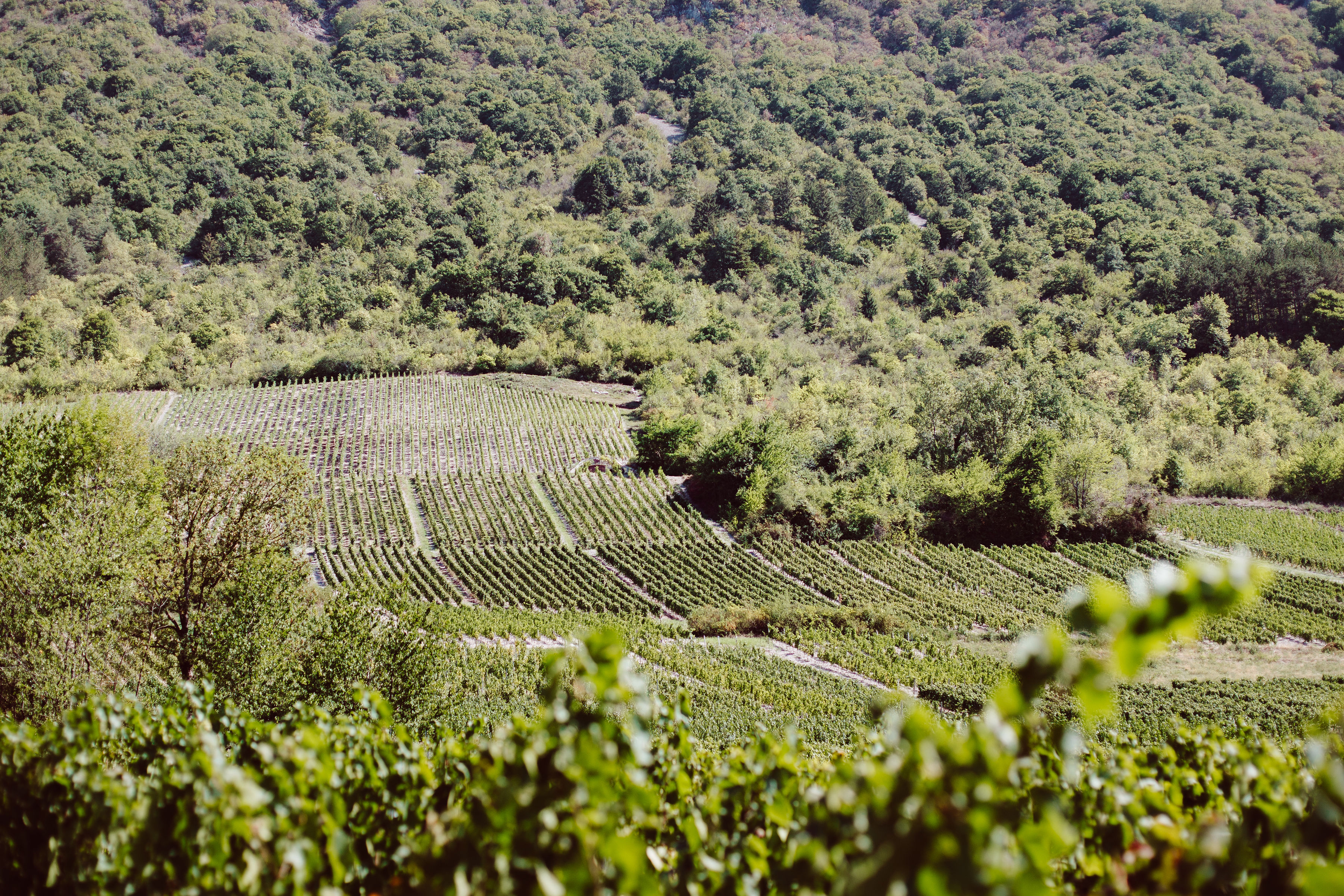Saint-Chinian PDO
Saint-Chinian: the Languedoc in red, white and rosé wines
This is one of the most productive appellations in the Languedoc. With an average of 105,000 hl per year and a vineyard of more than 3,000 ha, the AOC Saint-Chinian is not a confidential wine, except for its whites. The latter represent only 5% of the production. This appellation is therefore mainly composed of red wines, vintages produced in the Hérault, in Occitanie, near Béziers. It adjoins the Languedoc AOCs of Minervois and Faugères. Thanks to decades of work by passionate winegrowers to improve the terroir and rationalise production, the Saint-Chinian AOC has been able to regain its letters of nobility. Thus, in 2004, the appellation was enriched with two geographical denominations and white wines are now also included.
General presentation of Saint-Chinian
The AOC Saint-Chinian is produced north-west of Béziers, in the Haut Languedoc. It includes 20 villages, including Saint-Chinian which gave it its name. The appellation has wines in all three colours, with a large preponderance of reds, followed closely by rosés.
The vineyards cover about 3,000 hectares, at the foot of the Caroux and Espinouse massifs. Between the Mediterranean and the garrigues, the Saint-Chinian vineyards benefit from beneficial climatic conditions, as well as distinct soils. In the north of the appellation, schist soils dominate. They are at the origin of wines that are sometimes fruity, sometimes marked by smoky and roasted aromas. In the south of the appellation, the clay-limestone soils give rise to wines with great ageing potential, fresh, fruity and floral at the same time.
The grape varieties are typical of the Languedoc vineyards. Thus, the reds are essentially composed of Grenache, Mourvèdre and Syrah, a so-called "improver" variety that was introduced in the 1970s. Lledoner pelut, carignan and cinsault complete the vineyard. The whites exploit the virtues of white Grenache, Marsanne, Roussanne and Vermentino (rolle). Complementary grape varieties are white carignan, bourboulenc, viognier, clairette and macabeu.
The red and rosé wines of Saint-Chinian were classified as AOC in 1982, the white wines in 2004. That same year, two geographical denominations were recognised; alongside the AOC Saint-Chinian, we find the AOC Saint-Chinian Roquebrun and the AOC Saint-Chinian Berlou. Both occupy parcels located in the north-east of the appellation area and produce exclusively red wine.
Characteristics of Saint-Chinian
The red wines of Saint Chinian AOC have an intense, dark red colour. Their aromas are characteristic of the area in which they were born. In the schistous zone, in the north, they are marked by aromas that are said to be empyreumatic, i.e. they evoke smoke, roasted coffee, or even cocoa. To the south, on clayey-limestone soil, fresh fruit dominates, such as raspberry and redcurrant, with sometimes a touch of violet.
The rosé wines of the Saint-Chinian appellation have a brilliant colour ranging from clear pink to pale pink. Their aromas are fruity and can evoke the acidulous side of the small English candy.
The white wines of Saint-Chinian also have an intense colour, this time a deep yellow. Their aromatic palette is composed of citrus fruits, apricot, peach, pineapple, grilled notes and sweet spices.
How to enjoy a Saint-Chinian
A red Saint-Chinian AOC is a natural accompaniment to game and meat dishes: capon, rib of beef, lasagne, navarin, stews, roast poultry, duck confit, etc. It is best served at 16°.
Rosé wines are recommended with couscous and tajines, as well as with grilled fish or fish in sauce and salads. It should be drunk at a temperature of 10°.
White Saint-Chinian wines are best served with fish and seafood, as well as cheese and desserts. We recommend a serving temperature of about 8°.
